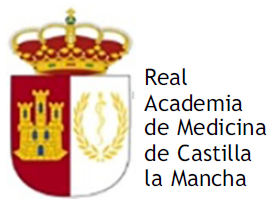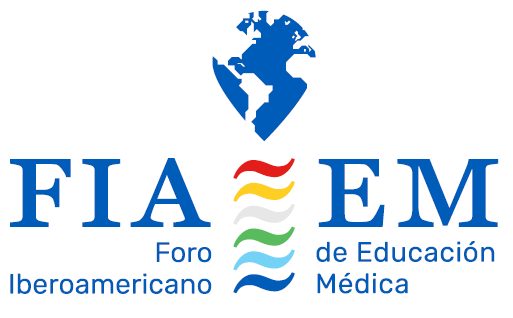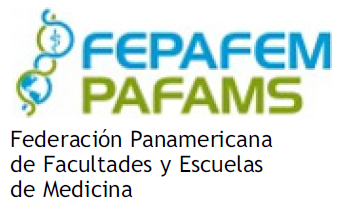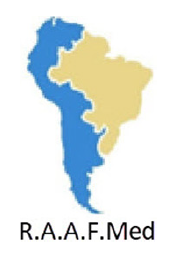
Within the context of medical humanism and professionalism, empathy has become essential element in building a satisfactory doctor–patient relationship. Researchers on empathy have developed several assessment tools, mostly represented by scales. In this paper, we discuss the experience of two studies on empathy carried out in Russia and Brazil. The Jefferson scale was used in the Russian study and the Jefferson scale and the Davis’ IRI were used in Brazil. The Russian experience, researchers found that the total empathy scores did not differ significantly between final year medical students and residents. No statistically significant differences in Moscow final year students’ scores related to gender and future specialty preferences were demonstrated. The Brazilian experience, researchers found in all statistical analyses, the affective dimension of empathy assessed by Davis’ IRI achieved lower scores in the clerkship group. The experiences of different cultures presented here suggest that the measurement instruments (scales) that are accepted in one culture may not be completely appropriate for evaluating the same competencies in another culture. The intricate world of emotions, where empathy plunges its roots, implies an effort to understand students’ affective world so the educators can also collaborate with educational resources.
En el contexto del humanismo y profesionalismo médico, la empatía se ha convertido en un elemento esencial para construir una relación médico-paciente satisfactoria. Los investigadores en empatía han desarrollado varias herramientas de evaluación. En este artículo discutimos la experiencia de dos estudios sobre empatía llevados a cabo en Rusia y Brasil. La escala de Jefferson se usó en el estudio ruso, y la escala de Jefferson y el IRI de Davis se usaron en Brasil. En la experiencia rusa, los investigadores encontraron que las puntuaciones de empatía total no diferían significativamente entre los estudiantes de medicina y los residentes del último año. En la experiencia brasileña, los investigadores encontraron en todos los análisis estadísticos, la dimensión afectiva de la empatía evaluada por el IRI de Davis logró puntajes más bajos en el grupo de últimos años de graduación. Las experiencias de diferentes culturas presentadas aquí sugieren que los instrumentos de medición (escalas) que se aceptan en una cultura pueden no ser completamente apropiados para evaluar las mismas competencias en otra cultura. El intrincado mundo de las emociones implica un esfuerzo por comprender el mundo afectivo de los estudiantes para que los educadores también puedan colaborar con los recursos educativos.
Not everything that counts can be counted, and not everything that can be counted count.1
Empathy as a core component of medical professionalismNowadays a terminology widely used to characterize medical quality is professionalism. The English word professionalism designates an ethical movement that originated in the US academic world in the 1980s by which they defined the essential elements of a medical practice of excellence.2,3
Within the context of medical humanism and professionalism, empathy has become essential element in building a satisfactory doctor–patient relationship.4 Empathy has also been considered an essential element in any humanization strategy.5–7 Developing meaningful interpersonal relationships between patients and physicians is important even for improving clinical outcomes.8
In the context of medical education, the concept of empathy has a broad and varied spectrum. Some authors consider empathy to be a predominantly cognitive quality.9 Irving and Dickson10 define it as an attitude that contemplates behavioral ability along with the cognitive and affective dimension.
Most authors place empathy on the affective dimension, giving it the ability to experience the other person's experiences and feelings. In this case it can be deduced that the ability to be empathic implies a spontaneous feeling of identification with the suffering person, a process in which emotion is involved.
And here we come to the educational issue. Is it possible to establish a learning process for empathy?11,12 And if so, can we really measure what we are teaching on empathy?13
Measuring empathy and the current scales: a brief explanationResearchers on empathy have developed several assessment tools, mostly represented by scales.14–16
We can find advantages and disadvantages in each of the scales. Scales for the general population, such as the Interpersonal Reactivity Index (IRI) developed by Davis, have a major advantage in presenting a multidimensional approach, analyzing both cognitive and affective aspects. At the same time, Jefferson's scale addresses more health-related issues, which would be an advantage.
The two research experiences described below illustrate this challenging issue: are we really fully appraising empathy with these tools? Are them universal despite the multicultural background of medical students?
The Russian experience and questions pointed outA cross-sectional study was conducted recently at the A.I. Yevdokimov Moscow State University of Medicine and Dentistry for evaluating empathy in medical students and residents using the Jefferson Scale Russian Version (JSE-S Russian version).17 The researchers found that the total empathy scores did not differ significantly between final year medical students and residents. No statistically significant differences in Moscow final year students’ scores related to gender and future specialty preferences were demonstrated.
The Russian research also found that mean empathy scores of the participants were comparable to those obtained in India or Iran but noticeably lower than the data reported by researchers from Western countries.18 The results were very close to findings of Chinese19 and Slovenian20 researchers who used JSE-S translated into their national languages.
Interestingly, these findings match geographical position of Russia and might reflect local cultural traditions as well as certain tension within the medical profession caused by ongoing reforms of healthcare system in this country. Differences in factor loading in comparison with genuine English version could reflect probable minor changes in perception of some translated items by native Russian speaking respondents.
We conclude that JSE-S in Russian translation seems to be a good start to measure the level of empathy in medical trainees, but probably we are missing something because of the cultural differences.
The Brazilian Experience and some more question: the affective domainIn a study conducted at a private university in the state of São Paulo – Brazil,21 two scales were used to evaluate students’ empathy: the JSPE evaluating the cognitive dimension of empathy and the IRI (Davis) for assessing cognitive and affective dimension of empathy. When compared the scores of JSPE and IRI, the affective dimension of IRI was the one with the lowest score. In all statistical analyses, the affective dimension of empathy assessed by IRI achieved lower scores in the clerkship group suggesting the affective dimension is the most affected during medical school.
The affective erosion of empathy during the medical course strengthens the proposition that it is very difficult to promote empathy without taking into account the student's emotions. The teacher has to be aware of crucial moments where the student's emotions emerge and use this moment as a training opportunity.12
Appraising medical empathy: is it all about scales?The pressure on the need to measure everything, is frightening, sometimes unmotivating for the professional and consequently ineffective. It's troubling how both education and medicine are laboring under similar pressures. Both professions have succumbed to a culture of measurement, oftentimes coloring if not dictating how we teach and doctor.22
Empathy has a cognitive and an emotional dimension. Evidently the cognitive dimension is easier to measure and here the evaluations are supported through the different scales. But it is the affective component that triggers the process of compassionate approach, that which is appreciated externally.2 The cognitive process helps to develop effective and professional compassion. It is easy to understand how in different cultures, the emotional dimension and its externalization are diverse, and they will hardly be able to fit in the same evaluative marks. To give a humanistic example: the emotion that the writings of Cervantes or Manzoni exude is not the same as those of Tolstoy or Dostoevsky. But it is undeniable that they are different modes of human affectivity. Attempt to measure this affectivity quantitatively would imply placing Sancho Panza and Prince Mickhin on the same scale.
The development and use of tools to assess empathy is inevitable. However, the experiences of different cultures presented here suggest that the measurement instruments (scales) that are accepted in one culture may not be completely appropriate for evaluating the same competencies in another culture.
Qualitative research involving focus group discussions may be an additional tool for understanding this process.
Preventing the erosion of empathy is a constant challenge in medical education. Measurements and evaluations are tools that can help educators in this mission. But they are just instruments, not the ultimate solution. The human being is not reduced to emotions, certainly; but emotions are an inevitable filter through which professional life is constructed.
Conflicts of interestThe author has no conflicts of interest to declare.








